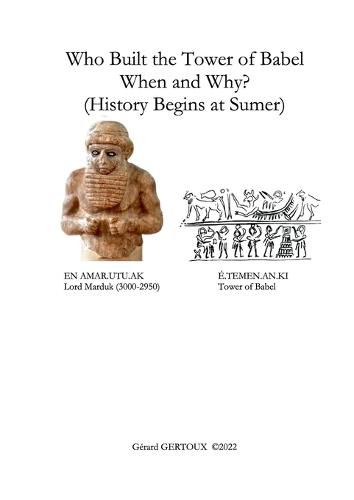Readings Newsletter
Become a Readings Member to make your shopping experience even easier.
Sign in or sign up for free!
You’re not far away from qualifying for FREE standard shipping within Australia
You’ve qualified for FREE standard shipping within Australia
The cart is loading…






This title is printed to order. This book may have been self-published. If so, we cannot guarantee the quality of the content. In the main most books will have gone through the editing process however some may not. We therefore suggest that you be aware of this before ordering this book. If in doubt check either the author or publisher’s details as we are unable to accept any returns unless they are faulty. Please contact us if you have any questions.
Historical truth progresses by relying on authentic documents validated by absolute dates just as scientific truth progresses by relying on theories validated by measurements. However, the history of origins eludes historians because of the lack of authenticated documents and reliable dates. The first king of the first Egyptian dynasty was Narmer (2838-2808), however he was preceded by ten predynastic kings who are mentioned at the beginning of three very damaged Egyptian king lists (Palermo Stone, Turin Canon and that of Manetho). Archaeological excavations have shown that at least ten of these mythical kings did exist and are qualified as predynastic kings (Dynasty 0). These kings belong to the Egyptian protohistory, and their reigns are dated only by 14C which places them in a period between 3300 and 3100 BCE. The period that precedes this protohistory is called prehistory "before history". Paradoxically, the only predynastic king of Mesopotamian protohistory, called Priest-King (c. 3000-2950) by archaeologists, is never mentioned in the Sumerian king lists, corresponds exactly to Lord Marduk of the Babylonian tradition (called Nimrod "we will rebel" in the Bible), the king who built the Tower of Babel ("Gate of God"), a ziggurat called Etemenanki ("temple of the foundation of heaven/sky and earth") by the Sumerians. The mighty empire built by Marduk suddenly collapsed around 3000 BCE, causing the "Uruk expansion" and the almost simultaneous appearance of the three oldest languages of mankind: Sumerian, Egyptian and Proto-Elamite. The period from 10000 to 3300 BCE, called Neolithic, was populated by prehistoric men who left no written documents, who built no temples or cemeteries, whose representations are based solely on the imagination.
$9.00 standard shipping within Australia
FREE standard shipping within Australia for orders over $100.00
Express & International shipping calculated at checkout
This title is printed to order. This book may have been self-published. If so, we cannot guarantee the quality of the content. In the main most books will have gone through the editing process however some may not. We therefore suggest that you be aware of this before ordering this book. If in doubt check either the author or publisher’s details as we are unable to accept any returns unless they are faulty. Please contact us if you have any questions.
Historical truth progresses by relying on authentic documents validated by absolute dates just as scientific truth progresses by relying on theories validated by measurements. However, the history of origins eludes historians because of the lack of authenticated documents and reliable dates. The first king of the first Egyptian dynasty was Narmer (2838-2808), however he was preceded by ten predynastic kings who are mentioned at the beginning of three very damaged Egyptian king lists (Palermo Stone, Turin Canon and that of Manetho). Archaeological excavations have shown that at least ten of these mythical kings did exist and are qualified as predynastic kings (Dynasty 0). These kings belong to the Egyptian protohistory, and their reigns are dated only by 14C which places them in a period between 3300 and 3100 BCE. The period that precedes this protohistory is called prehistory "before history". Paradoxically, the only predynastic king of Mesopotamian protohistory, called Priest-King (c. 3000-2950) by archaeologists, is never mentioned in the Sumerian king lists, corresponds exactly to Lord Marduk of the Babylonian tradition (called Nimrod "we will rebel" in the Bible), the king who built the Tower of Babel ("Gate of God"), a ziggurat called Etemenanki ("temple of the foundation of heaven/sky and earth") by the Sumerians. The mighty empire built by Marduk suddenly collapsed around 3000 BCE, causing the "Uruk expansion" and the almost simultaneous appearance of the three oldest languages of mankind: Sumerian, Egyptian and Proto-Elamite. The period from 10000 to 3300 BCE, called Neolithic, was populated by prehistoric men who left no written documents, who built no temples or cemeteries, whose representations are based solely on the imagination.